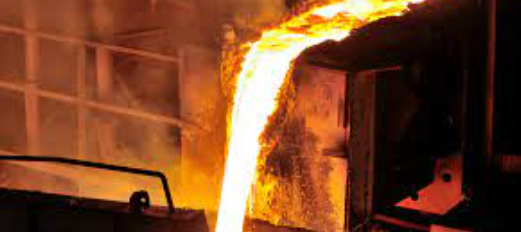Metal casting is a process in which metal is melted into a liquid meeting certain requirements, poured into the mold, cooled, solidified and cleaned to obtain castings with predetermined shape, size and properties. Because the casting rough embryo is almost formed, it can achieve the purpose of no machining or a small amount of machining, reduce the cost and reduce the time to a certain extent. Casting is one of the basic processes of modern machinery manufacturing industry. Metal mold casting is one of the casting processing methods in the casting industry. Under the action of gravity, liquid metal fills the metal mold and cools and solidifies in the mold to obtain the desired castings. Next, we are going to in depth the history of metal castings.

The History Of Metal Casting
In ancient times, China, India, Babylon, Egypt, Greece and Rome have forged weapons, sacrificial vessels, works of art and household utensils. Early castings were made of gold, silver, copper and their alloys. The Bronze Age is a glorious page in the history of human civilization; Later, cast iron castings appeared. Iron castings were widely used in China as early as the Warring States period, and the technical tradition has a long history. Metal casting metallurgy and casting are complementary processes. The word “metallurgy and casting” in ancient China reflects this fact. Although the later foundry technology has developed into a relatively independent branch of mechanical manufacturing technology, it is still inseparable from metallurgical technology.
1. Cast iron has a long history, but its development speed is slow. It was not until 1722 that leomir created the “cupola” and began to study the microstructure and fracture of cast iron with a microscope that the situation changed. In 1734, defer written by svedenberg came out and had a preliminary theoretical understanding of cast iron technology. From 1765 to 1785, due to the emergence of the steam engine, cast iron was widely used in the machine manufacturing industry since the 1860s, and cast iron rails were also used in the transportation department. In 1788, cast iron pipes with a total length of 60 kilometers were produced for the Paris waterworks. The increasing demand and development of cast iron has promoted the technical progress and theoretical research of cast iron.
2. Cast steel has high melting point and complex composition control (such as deoxidation). Crucible steelmaking did not appear until 1740 and began to develop a process.
3. Aluminum die casting was invented by molten salt electrolysis in 1886. By the beginning of the 20th century, the casting industry of aluminum and its alloys had developed rapidly and ranked first in non-ferrous metal casting. The proportion of traditional copper alloy castings has gradually decreased. Metal casting methods have been developed to meet various needs, which can economically make castings with complex shapes and sizes.
The Process of Metal Casting
- 1. Because the thermal conductivity and thermal capacity of the metal mold are large, and the cooling speed is relatively fast, the structure of the casting will be relatively dense, and its mechanical properties are about 15% higher than those of sand mold products.
- 2. The products with high dimensional accuracy and low roughness can be obtained, and the quality stability is good.
- 3. Because sand core is rarely used in this process, it will reduce environmental pollution, dust and harmful gas emission in environmental protection.
- 4. Because the metal mold has no air permeability, corresponding measures should be taken during processing to discharge the gas in the mold cavity and the gas in the sand core.
- 5. There is no concession in itself, and cracks are easy to appear when the product solidifies.
- 6.The processing cycle is long and the cost is high. It is more suitable for mass production and reduces the cost.

